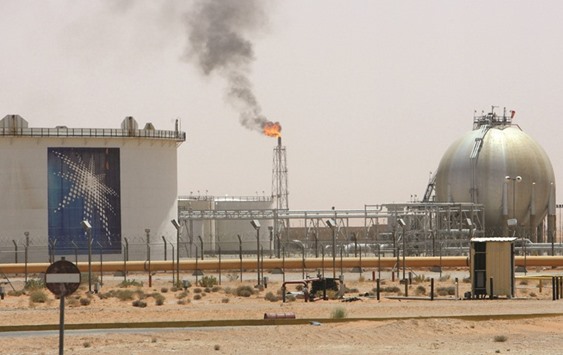Buy oil now, and count on Saudi Arabia for support, according to Citigroup Inc.
Opec’s output cuts aimed at easing a global glut are “real” and is cleaning up the market, analysts including Seth Kleinman wrote in a report dated March 14. While prices have dropped recently amid rising US inventories and drilling activity, investors should take advantage of the slide because the Saudis are likely to defend prices this year, according to the bank.
The bank’s comments are similar to Goldman Sachs Group Inc, which called for investors to be patient and said they should go, or stay, long on oil. Prices recently fell below $50 for the first time since December on concern rising US output will offset curbs by the Organization of Petroleum Exporting Countries and other producers. While Saudi Arabia told Opec it dialled back on some of its cuts last month, the extra supplies were moved into storage and the kingdom said it remains determined to stabilise the market.
“Citi views this sell-off as a buying opportunity for 2017,” the analysts wrote. “Running down the record level of inventories was always going to be a lumpy process, with tighter timespreads pushing oil out of tank and onto the physical market where it will weigh until it clears.”
While Saudi Arabia pumped more than 10mn bpd last month, the volume of crude supplied to markets nonetheless fell by 90,000 bpd to 9.9mn. The nation’s data show it’s cutting output more than required under the terms of Opec’s November 30 agreement. Nevertheless, Energy Minister Khalid Al-Falih has warned that the kingdom won’t indefinitely “bear the burden of free riders.”
“The perceived change in rhetoric from al-Falih, saying there would be no ‘free-rides’ for US shale producers, is at odds with the ongoing Opec cuts and the headlines reflecting other Opec producers are already starting to assume that the cuts do get extended, in line with Citi’s expectations,” the bank said in its report. “‘The Saudis must play a balancing act this year, needing to keep the oil price up through 2017.”
The Opec agreement is for an average monthly cut over a six-month period, and crude production data for January and February indicate that Saudi output for the first two months of the year was 180,000 bpd below its target level so far, according to Citigroup.
Oil at $40 no problem as US drillers snub Opec with hedges
Opec’s worst enemy isn’t US shale drillers. It’s the hedges propping them up, Bloomberg reported.
American oil explorers who survived the worst of the 2014-2016 market rout are shrugging off the 14% slide in prices this year from a high of $55.24 to less than $48 a barrel on March 124.
The price would have to drop to the $30s or lower to dent the bottom line of many drillers now working US shale fields, said Katherine Richard, the CEO of Warwick Energy Investment Group, which own stakes in more than 5,000 oil and natural gas wells.
That’s because many producers have already locked in future returns with financial contracts that guarantee the price of their oil for most of the rest of the decade. Such resilience poses a dilemma for countries that agreed to an Opec-led production cut aimed at tightening supplies to raise prices and relieve their distressed national economies.
“We’re in a boom again in Texas, despite what’s happening with prices lately,” said Michael Webber, deputy director of the University of Texas’ Energy Institute in Austin. “The cowboy spirit is back. Hedging is playing a big role.”
Oil prices took another hit after Saudi Arabia dropped a bombshell on the Organization of Petroleum Exporting Countries: the Saudis, heavyweight of the 13-nation group, raised its output last month to more than 10mn bpd, reversing about a third of the cuts it made the previous month.

A gas flame is seen in the desert near the Khurais oilfield, Saudi Arabia (file). While the kingdom pumped more than 10mn bpd last month, the volume of crude supplied to markets nonetheless fell by 90,000 bpd to 9.9mn. The nation’s data show it’s cutting output more than required under the terms of Opec’s November 30 agreement.


